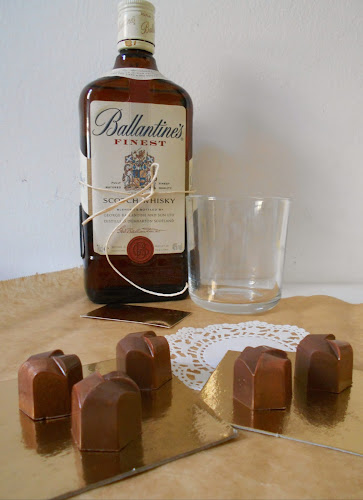Nem vagyok egy nagy Unicumos (általában nem vagyok oda a keserű ételekért/italokért), ám természetesen ha csokiról van szó, akkor mindjárt más a helyzet :D Az ember általában nem gondolkodik azon, hogy milyen kalandos múltra tekint vissza egy-egy alapanyag, de most utánanéztem egy picit, és összegyűjtöttem pár érdekességet az Unicumról:
- Az Unicumot a legenda szerint 1790-ben találta fel a Zwack család őse, aki II. József udvari orvosa volt. A név pedig onnét származik, hogy amikor a király megkóstolta, így kiáltott fel: "Dr. Zwack, das ist ein Unikum!"
- Zwack József 1847-ben kapott engedélyt szeszesitalok gyártására, a gyár története innét eredeztethető. 1885-ben 22 munkást foglalkoztattak, 200 féle termékük volt, és már ekkor exportáltak több országba, például az USA-ba és Franciaországba. A Zwack család 1895-től lett "császári és királyi udvari beszállító".
- Az Unicum jellgezetes szimbóluma, a kereszt először még vörös volt, a használati jogért 1899-től 1922-ig fizetett a cég a Magyar Vöröskeresztnek - akkor átálltak a vörös alapon arany keresztre.
- Habár Zwack János kikeresztelkedett, 1944-ben a család zsidó származása miatt üldöztetésnek volt kitéve. Állítólag maga Raoul Wallenberg állított ki svéd menlevelet Zwack Péter számára.
- 1947-ben a Zwack gyárat államosította a szocialista kormányzat. Zwack János ekkor Jugoszláviába menekítette fiát, Pétert, aki onnét gyalog ment Olaszországba. Az apa egy szovjet teherautó sofőrjét vesztegette meg, hogy egy olajoshordó alatt rejtőzve vigye ki az országból. Egyetlen dolgot vitt magával - az Unicum receptjét.
- Az Unicum több mint negyvenféle gyógynövény kivonatát tartalmazza, és immár a család hatodik generációja őrzi a receptúra titkát. Az államosítás után Zwack János testvére, Béla a cégnél maradt, egyszerű munkásként dolgozott, ám az ő érdeme volt az, hogy a gyár vezetőinek egy módosított receptet adott át, így a valódi Unicum továbbra is a család titka maradhatott.
- A szocializmus alatt a Zwack gyárban hamis Unicumot gyártottak, míg a valódit Milanóban forgalmazták. Zwack János be is perelte a magyar államot, hogy a családi védjegyet megőrizze. A pert megnyerte, így az állami vállalat többé nem használhatta a Zwack és Unicum neveket a nyugatra irányuló exportban.
- Zwack Péter a szocializmus bukása után visszavásárolta családja gyárát. Ma 2500 négyzetméteren terül el a gyár, ahol tízezer literes fahordókban érlelődik az igazi Unicum.
I am not exactly a Unicum fan (usually I'm not too fond of bitter foods/drinks), but when it comes to chocolate, now that's a different story :D One don't usually think about the adventurous history of a certain component, but today I made some research and collected a couple of fun facts about Unicum:
- According to legend, Unicum was invented in 1790 by an ancestor of the Zwack family, who was the court physician of Joseph II. The name comes from the king's approving cry when he tasted the drink: "Dr Zwack, das ist ein Unikum!"
- József Zwack received a permit to produce alcoholic drinks in 1847; this was the beginning of the factory's history. In 1885, they had 22 employees and 200 types of products. Even then they exported to other countries, such as the USA and France. From 1895, the Zwack family was appointed as a royal supplier.
- The distinctive symbol of the Unicum, the cross, used to be red and between 1899 and 1922, the company paid to the Hungarian Red Cross for the permission to use it. Then they changed the symbol to a gold cross on a red background.
- Even though János Zwack was baptized, in 1944 the family was subjected to persecution due tot heir Jewish origins. It is said that Raoul Wallenberg himself issued a Swedish protective pass for Péter Zwack.
- In 1947, the Zwack factory was nationalized by the socialist government. János Zwack then sent his son, Péter to Yugoslavia, from where he walked across the Italian border. The father bribed the driver of a Soviet truck to smuggle him out of the country under an oil-drum. He took only one thing with himself - the recipe of the Unicum.
- The Unicum contains the essence of more than 40 kinds of herbs and the recipe has been the secret of six generations of the family. After the nationalization of the factory, János Zwack's brother, Béla remained there as a simple worker. It was his idea to give a modified recipe to the new owners of the factory, thus the secret remained with the family.
- During socialism, the Zwack factory produced a fake Unicum, while the original was made in Milan. János Zwack sued the Hungarian state in order to keep the family's copyright. He won the legal case and thus the nationalized company was not allowed to use the names Zwack and Unicum in its export to the West.
- Péter Zwack bought back his family's factory after the fall of the Iron Curtain. Today the factory is located on 2500 square meters and the real Unicum is aging in 10.000 liter barrels.














